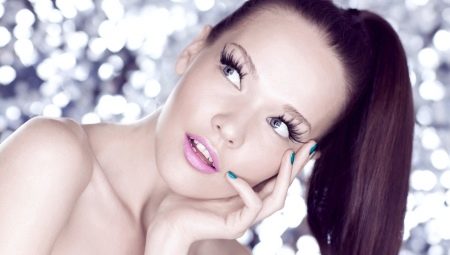Every woman strives to look perfect 24 hours a day. Modern women of fashion can no longer imagine their life without eyelash extensions. In this article, we will understand what artificial hairs are made of.

Materials
In the modern beauty industry, artificial and natural eyelash extensions are found. Most often they are used first.
Artificial
These include:
- polyester;
- acrylic polished fiber;
- PBT fibers.

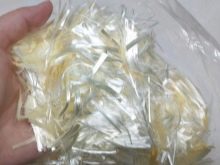
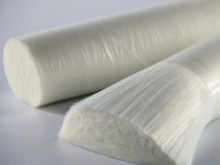
Eyelashes made made of polyester, are durable and do not cause allergic reactions. Synthetic hairs are resistant to moisture and practically do not absorb it. Thus, unfavorable weather conditions are unlikely to affect the condition of eyelash extensions made of polyester.
Also, the hairs are not afraid of exposure to direct sunlight, keep their shape perfectly and do not fade.
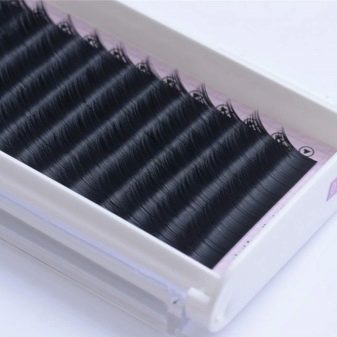
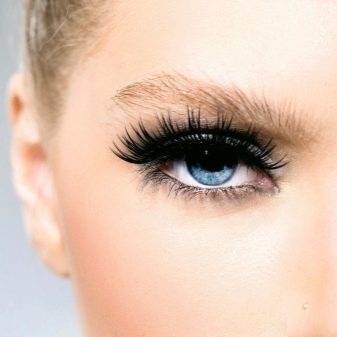
If it comes about polished acrylic, then its use by modern masters is minimized. The fact is that the first cilia for extension were made of this material. The hairs are quite dense and have a uniform color. However, their texture is excessively tough, so they look unnatural. Today, such hairs are practically not used.
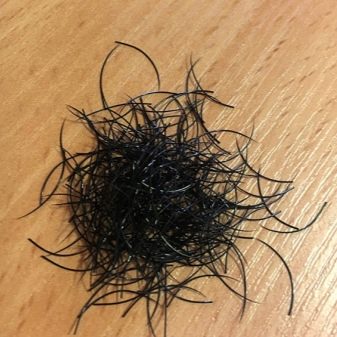
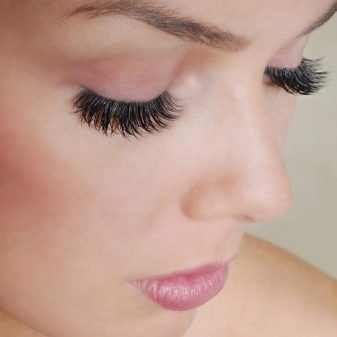
Modern stylists prefer PBT fiber (polybutylene terephthalate). It is a thermoplastic polymer. The hairs are durable and elastic, look very natural and elegant.
Cilia made of plastic do not absorb odors and do not provoke allergic reactions. Also, dust does not accumulate on them, they are not exposed to adverse atmospheric phenomena (rain, wind, snow).The texture of thermoplastic polymer eyelashes can be matte, semi-gloss and glossy, while having a rich dark color.
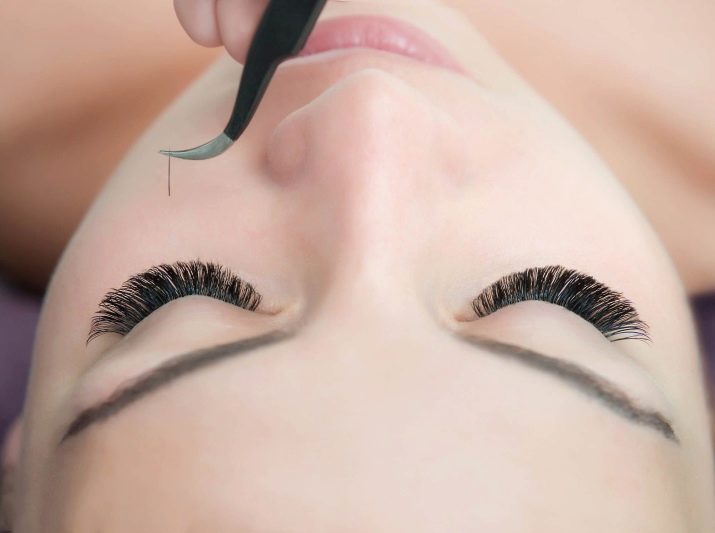
Nowadays, experts increasingly prefer artificial hairs made of plastic and called "silk", "sable" and "mink". They are distinguished by brilliance, diameter and weight.
Consider these options in more detail.
"Mink"
Such cilia are one of the most popular types for building. Thin and light hairs, the thickness of which does not exceed 0.05 mm, are ideal for owners of weak and short eyelashes. The texture of the “mink” is matte.
Actual for brunettes with dark skin.
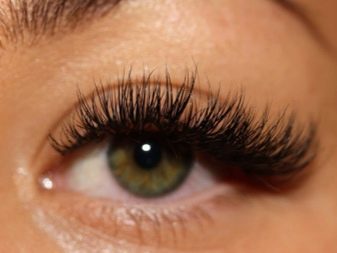
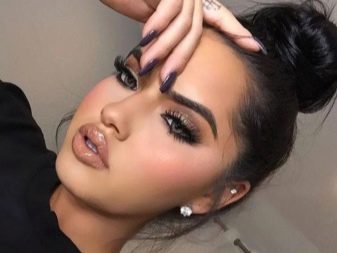
"Silk"
Another popular type of PBT fiber. Hairs from "silk" have a matte or glossy texture (thickness - up to 0.25 mm). Their color is not as saturated as that of the “mink”, therefore it is relevant for white-skinned young ladies with blue eyes.
The disadvantages of this type include the deformation of the tips, which occurs during wear.
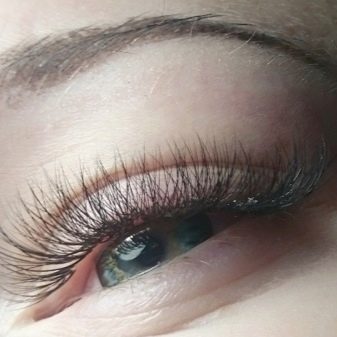
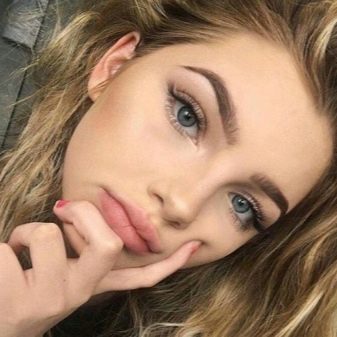
"Sable"
The villi are made of durable plastic and have a glossy texture. Known for their elasticity and have different thicknesses. Used to give volume and length to natural eyelashes. but most cosmetologists note the stiffness of sable hairs.

Natural
Beauty industry did not disregard women who prefer eco-materials. One of the materials Hevea juice (Brazil) stands for the manufacture of natural cilia for building. Thin threads are obtained from rubber, which are distinguished by strength and elasticity. The price for such material is justifiably high.
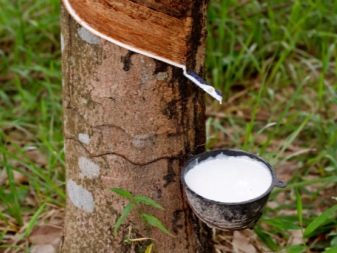

Do not forget about the fur of fur animals. They are subjected to special processing and sorting.
It is important to understand that this material cannot be homogeneous (cilia vary in length, thickness and color). However, their weightlessness and elegant appearance are undoubted advantages.
The cost of cilia from fur of fur animals is high, besides the duration of the socks does not exceed 2 weeks. This material is quite rare.
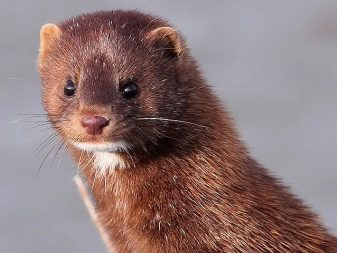

Requirements
All materials for eyelash extensions should be purchased in a specialized store where quality assurance will be provided to the buyer. Quality products are hypoallergenic, do not cause irritation and discomfort.
Buying artificial eyelashes from "resellers" is not recommended. Otherwise, eyelashes, which are made of low-quality materials, can cause redness of the skin of the eyelids, severe itching and a foreign body sensation.
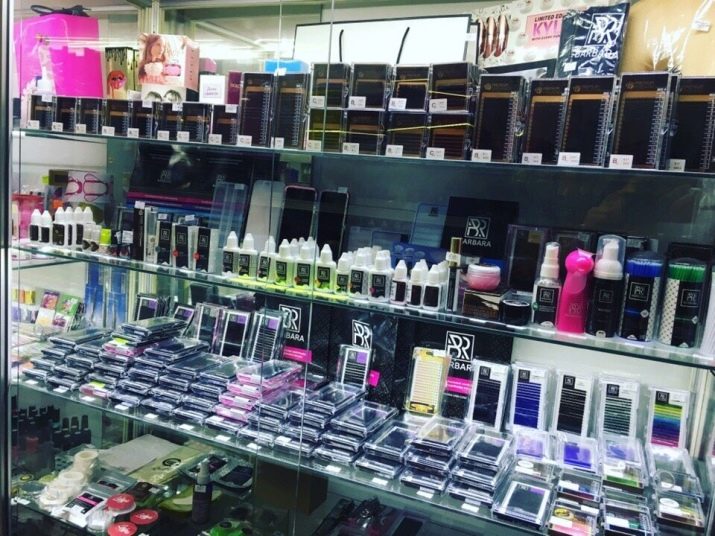
There are also certain requirements for already extended hairs.
So, experts advise:
- on the first day after the procedure eliminate moisture on artificial hairs;
- two days after building up avoid visiting the solarium, sauna and bath;
- if possible do not touch “fresh” cilia during the day;
- if after building the woman experiences severe discomfort, pain, then the eyelashes must be “removed” and consult a doctor for qualified help.
Criterias of choice
The purchase of eyelash extensions should be taken seriously. The fact is that poor-quality materials can cause irreparable harm to health.
When purchasing this or that type of eyelashes for extension, pay attention to the following recommendations.
- The density of artificial villi should match the thickness of the "native" eyelashes. Weak hairs can not withstand heavy loads.
- When choosing the length of eyelashes, the oval of the face is taken into account. Thin, elongated villi relevant to chubby young ladies. Short ones are more suitable for ladies with a thin elongated oval.
- Partial building can be used to create this or that image. Most often, artificial hairs of maximum length (20-25 mm) are used.
- The low price of artificial cilia should alert. It is unlikely that cheap materials will differ in durability and quality.

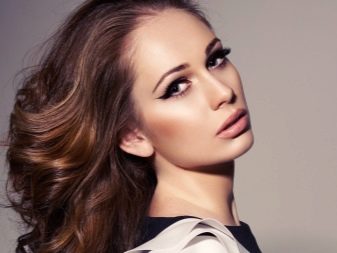
Even when using expensive and high-quality materials for building, cosmetologists advise periodically to provide "rest" to natural cilia.
If a woman decided to carry out the procedure at home, then it is best for her to start with the beam method. When choosing glue, it is advisable to pay attention to a product of the same brand under which eyelashes are produced.
About what eyelashes are made for extensions, see below.
